THIS is an account of a short walk in the hills above Arkengarthdale ??? but it has a back story that begins in the early 1980s and involves a group of mine explorers and an elusive portal into the underworld known as the Brandy Bottle Incline . . .
The Brandy Bottle Incline was a tunnel ??? in fact two parallel tunnels dug during the 19th Century ??? that descended at a steep angle into the moors between Arkengarthdale and Swalesdale, in the north Pennines, to intercept a rich band of mineralised ground called the Friarfold Vein.
The veins in the immediate area, which were rich in lead, were worked by some huge operations ??? namely the Friarfold, Old Gang and Surrender mines, with the equally extensive Gunnerside mines to the south in Swaledale. A hundred-and-fifty years ago, this was an industrious place. It was bustling. It was productive. And with a lead-miner???s life expectancy of 45 years ??? it was unhealthy.
Stark spoil-heaps smothered the valley sides. Lead smelters filled the pure Pennine air with noxious fumes. Hushes gouged ugly ravines in the moors. I shall return to hushes because they need an explanation. Let???s just say for now they were ugly chasms that changed the Pennine landscape for ever. (Click pictures for high-res versions)
One Sunday morning, with damp mist obscuring the visible world, a dozen mine explorers wearing Wellington boots and overalls set out from Surrender Bridge along a track that someone said led to the Brandy Bottle Incline.
We walked for miles through mist, cold rain and rasping heather until we were soaked to the skin. The best part of a cheerless day was spent tramping in circles searching ??? unsuccessfully ??? for the Brandy Bottle Incline. We took all the right steps, as they say, but not necessarily in the right order.
That was about thirty years ago. Today I???m returning to that narrow fold in the hills between Surrender Moss and Melbecks Moor for a long-overdue visit to the Brandy Bottle Incline. If it???s still there, that is.

 The day is already old because I slept in this morning and then planted three rows of Japanese winter onions on the allotment before setting out. I bet Reinhold Messner never embraced such a strict training regime in preparation for his oxygen-less assault on Everest. I bet he doesn???t grow Japanese onions either.
The day is already old because I slept in this morning and then planted three rows of Japanese winter onions on the allotment before setting out. I bet Reinhold Messner never embraced such a strict training regime in preparation for his oxygen-less assault on Everest. I bet he doesn???t grow Japanese onions either.
At about 2pm, after driving through the famous ford that featured in the opening titles of All Creatures Great and Small, and tramping up a track along Mine Gill, I arrive at the ruins of the Old Gang Smelt Mill.
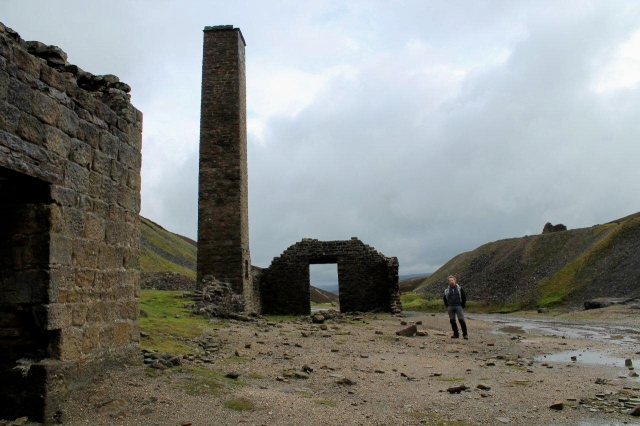 These mills, which are numerous in the Pennines, had long flues that stretched many hundreds of feet up the fellside to increase the draught and condense furnace fumes into mineralised residues. Periodically, the flues would shut down and men would be sent inside to scrape out deposits of lead and arsenic. Are you beginning to see where the low life-expectancy thing comes in? And these chaps were just the surface workers. They had the easy job.
These mills, which are numerous in the Pennines, had long flues that stretched many hundreds of feet up the fellside to increase the draught and condense furnace fumes into mineralised residues. Periodically, the flues would shut down and men would be sent inside to scrape out deposits of lead and arsenic. Are you beginning to see where the low life-expectancy thing comes in? And these chaps were just the surface workers. They had the easy job.


 At the Old Gang mill, galena ??? the ore of lead ??? was crushed in a water-powered stamping mill and separated from its accompanying veinstone by gravitation in contraptions called jigs and buddles. It was then smelted in a furnace fuelled by peat dug from the fell. The operation was very self-sufficient. Not environmentally friendly, carbon neutral or conducive to health and wellbeing ??? just self-sufficient.
At the Old Gang mill, galena ??? the ore of lead ??? was crushed in a water-powered stamping mill and separated from its accompanying veinstone by gravitation in contraptions called jigs and buddles. It was then smelted in a furnace fuelled by peat dug from the fell. The operation was very self-sufficient. Not environmentally friendly, carbon neutral or conducive to health and wellbeing ??? just self-sufficient.
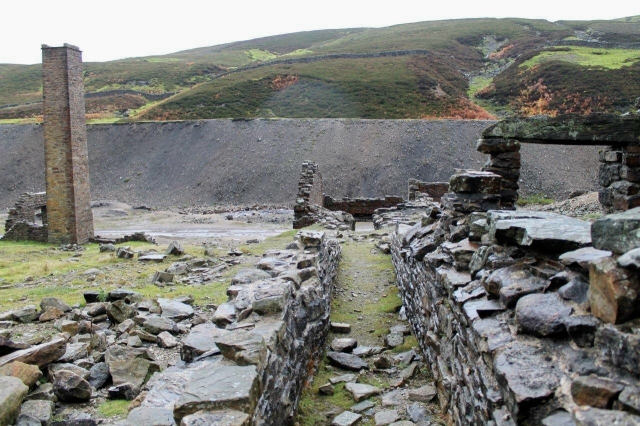

 There are some colourful topographical names around here, many of which have their origins in mining times: Ash Pot Gutter, Old Rake Hush, Notion Gill, Smith Hill, Doctor Gill, Windy Beale, Surrender Bridge. This is history clinging to rocks and nailed to the hillside to prevent the past being torn away by the wind. It???s history with attitude and segs on its hands.
There are some colourful topographical names around here, many of which have their origins in mining times: Ash Pot Gutter, Old Rake Hush, Notion Gill, Smith Hill, Doctor Gill, Windy Beale, Surrender Bridge. This is history clinging to rocks and nailed to the hillside to prevent the past being torn away by the wind. It???s history with attitude and segs on its hands.
From the mill I continue north-west along the track. The ugly gash of North Rake Hush slices up the fell to the south.
Let me tell you about hushes. They were an ingenious method of turning nature upon itself to exploit the environment. They were simple, effective, and they provided a lucrative return ??? but with little thought for the contentment of future generations. A bit like selling off the Royal Mail, if you like.
The mining companies realised that the mineral veins ran across the grain of the landscape, cutting almost at right angles through ridges and valleys. So they built reservoirs on the tops of the hills and periodically discharged huge volumes of water along the course of the veins, sweeping turf, boulder clay, and loose rock from the fellside to reveal the mineralised ground.
This ground would then be worked by miners. The pattern would be repeated: floods of water would surge down, the miners would go in with their picks, the hushes would get deeper and deeper, and then more water would surge down. They were called hushes because that???s the noise the water made as it swept through the ever-deepening chasms. Husssshhhhhhhhhh . . .
 You have to admire the early industrialists. They didn???t mess around waiting for Local Enterprise Partnerships to determine whether or not disfiguring the countryside would expand private sector growth and create stakeholder opportunities. They got off their backsides and washed away the landscape for galena and its byproducts. It was opencast fracking without the police cordons and Caroline Lucas.
You have to admire the early industrialists. They didn???t mess around waiting for Local Enterprise Partnerships to determine whether or not disfiguring the countryside would expand private sector growth and create stakeholder opportunities. They got off their backsides and washed away the landscape for galena and its byproducts. It was opencast fracking without the police cordons and Caroline Lucas.
And the results are still here. The irony is, time and nature have cloaked the hushes in heather, moss and grass ??? and they have become part of the Pennine landscape. They have been reclaimed and naturalised. Like old wounds.
 I wander further up the valley, and just beyond the place where the track fords the stream I stumble upon the double portals of the Brandy Bottle Incline. This has been the longest walk of my life ??? thirty years from Surrender Bridge to these two dark holes in the ground. I wouldn???t mind but it???s only a couple of miles.
I wander further up the valley, and just beyond the place where the track fords the stream I stumble upon the double portals of the Brandy Bottle Incline. This has been the longest walk of my life ??? thirty years from Surrender Bridge to these two dark holes in the ground. I wouldn???t mind but it???s only a couple of miles.
The mine company originally planned to install a steam engine here for hauling ore wagons from the depths of the Friarfold Vein, but the plan altered and the engine was never installed. The incline was used as an access for horses and miners, its full potential never being realised.
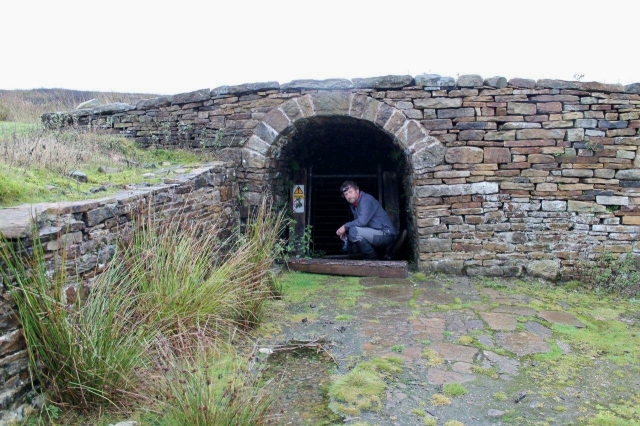

 I happen to have brought two head-torches with me so I crawl under a gate in the left-hand passage and slither down the slope for about a hundred feet to where the tunnel begins to lower and a large volume of water cascades through the roof. This is far enough for a silly sod by himself. But it???s good to see the incline is still open and the prospect of many fathoms of abandoned tunnel lies beyond my light beam, waiting to be explored.
I happen to have brought two head-torches with me so I crawl under a gate in the left-hand passage and slither down the slope for about a hundred feet to where the tunnel begins to lower and a large volume of water cascades through the roof. This is far enough for a silly sod by himself. But it???s good to see the incline is still open and the prospect of many fathoms of abandoned tunnel lies beyond my light beam, waiting to be explored.
By the way ??? yes, horses. They were used for hauling ore-tubs. Most of the mines in these dales were worked by horizontal tunnels ??? or levels ??? driven into the hills from the valley bottoms, and horses were ideally suited to the task of hauling strings of tubs from the workings to the mills. And that???s not all they were used for.
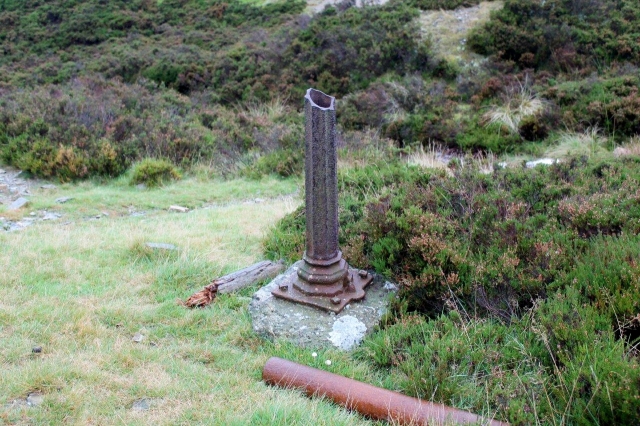
“Lucy was dismayed to find that Mr Tumnus had been on the vodka again and had taken a sledge-hammer to the lamp-post. She sighed dramatically, as children do when they are vexed, and kicked the empty bottle into the stream.”
Above the Brandy Bottle Incline I veer south-west along Friarfold Rake, where a continuous line of ancient tips marks the course of the Friarfold Vein as it crosses the moor towards Gunnerside ??? and almost immediately, and quite unexpectedly, I discover the remains of a horse gin shaft.
 Ah. This is a little gem to brighten up a wet day. Horse gins (gin being a corruption of ???engine???) hauled buckets of mineral from vertical shafts, and have been used since ancient times.
Ah. This is a little gem to brighten up a wet day. Horse gins (gin being a corruption of ???engine???) hauled buckets of mineral from vertical shafts, and have been used since ancient times.
A simple idea. The horse walked in a circle around a capstan, and the capstan wound a rope that went over a wheel and down the shaft. Look at a large-scale map of any mining area in this country and you will probably see evidence of their existence in old names: Gowerdale Windypits, on the North York Moors, is one ??? ???windypit??? being a corruption of winding pit, as in horse-winding pit.
 Gin pits, horse-winding pits, windy pits, whim pits, horse whims, whim shafts ??? they were everywhere. Horse gins were also used extensively on farms, usually enclosed in octagonal or circular buildings. There is one within a hundred yards of my back door, recently converted into a holiday cottage. It???s a bit cramped when the horse is working, but holidaymakers put up with anything in these times of austerity.
Gin pits, horse-winding pits, windy pits, whim pits, horse whims, whim shafts ??? they were everywhere. Horse gins were also used extensively on farms, usually enclosed in octagonal or circular buildings. There is one within a hundred yards of my back door, recently converted into a holiday cottage. It???s a bit cramped when the horse is working, but holidaymakers put up with anything in these times of austerity.
This little gin pit on Friarfold Rake has the remains of a circular wall, a tiny stone shelter where the engineman probably huddled, and a depression a few yards to the east indicating the site of the shaft. It was probably old or even redundant when the Brandy Bottle Incline was sunk in the mid-19th Century ??? but it???s still here. It???s a tiny jewel of history in a wild and empty landscape.

 I follow the vein and its spoil-heaps across the crown of the moor, expecting to be greeted by panoramic views of Gunnerside Gill and Swaledale ??? but rain sweeps in from the east and the landscape is obliterated. So I follow a track back along the crest of North Rake Hush to Mill Gill and the road to Surrender Bridge, passing an old stone-breaking machine and a rather dangerous shaft capped with old railway lines.
I follow the vein and its spoil-heaps across the crown of the moor, expecting to be greeted by panoramic views of Gunnerside Gill and Swaledale ??? but rain sweeps in from the east and the landscape is obliterated. So I follow a track back along the crest of North Rake Hush to Mill Gill and the road to Surrender Bridge, passing an old stone-breaking machine and a rather dangerous shaft capped with old railway lines.
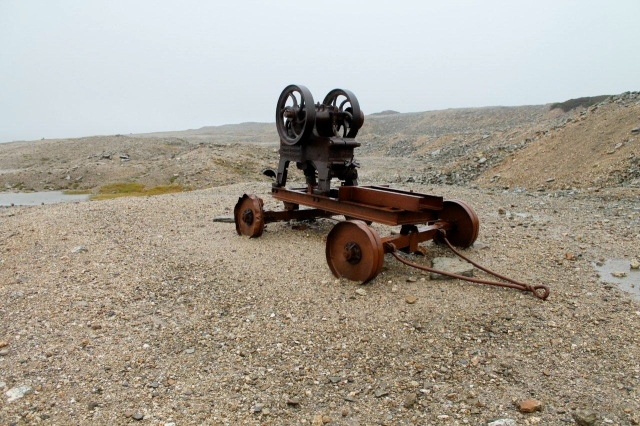


 The rain is still lashing when I reach the car. But here???s a thought. Pity the poor bloke who had to huddle on the moor, coaxing his horse round in circles and unhooking kibbles of lead ore as they were hauled to the surface. No light-weight waterproofs, thermal base-layers and flask of tea for him. Nothing but freezing rain and the prospect of more.
The rain is still lashing when I reach the car. But here???s a thought. Pity the poor bloke who had to huddle on the moor, coaxing his horse round in circles and unhooking kibbles of lead ore as they were hauled to the surface. No light-weight waterproofs, thermal base-layers and flask of tea for him. Nothing but freezing rain and the prospect of more.
I expect he used to pray for sunshine ??? or a day off in the warmth of the furnace flues, scraping lead and arsenic from sooty stones.
 AND FINALLY: Old Railway Goods Wagons No 14
AND FINALLY: Old Railway Goods Wagons No 14
DRIVING home down the moor and joining the main road in Swaledale, I enter the hamlet of Healaugh and am greeted by the site of an old railway goods wagon in a farmyard, several lumpy miles from the nearest railway line.
It???s always a joy to see something like this. In years to come it might baffle the archaeologists. And it???s another for my collection of old railway goods wagons in obscure locations. Toot toot.

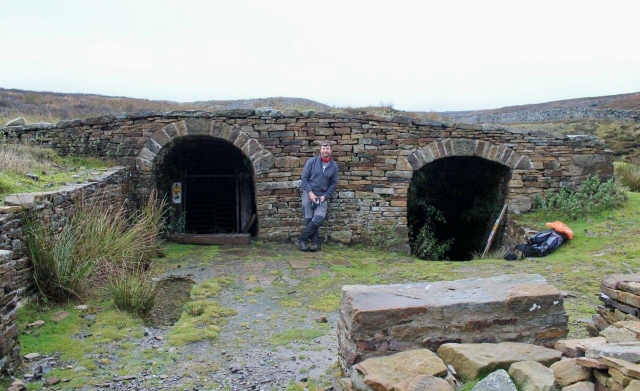
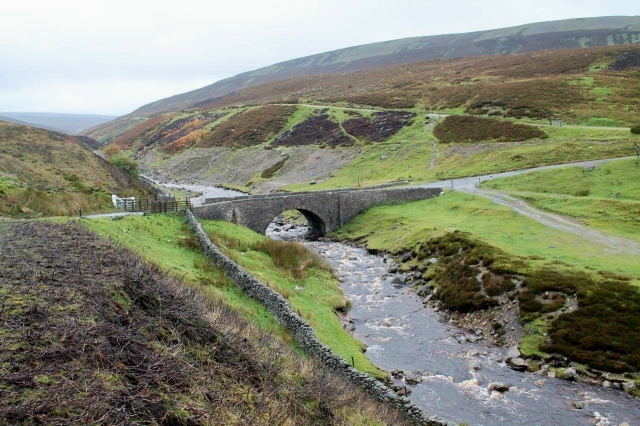
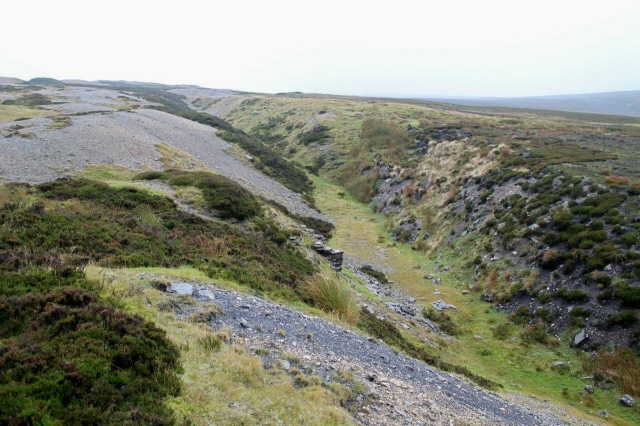














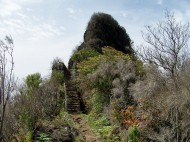








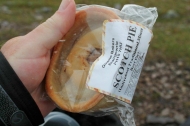





Another fascinating post. Informative, humorous and enjoyable to read. Great pics too.
Hi CairnStoner. Thanks for dropping by.
Cheers, Alen
Another cracking read as per Alen. We have a gin pit not far from me. I wondered where the name came from, I thought perhaps it was a hole in the ground where Victorian scallies knocked back the hard stuff.
I wish I had known about this history when I walked down this very path last year. Although the weather was such that I doubt I would have dallied as like the old winders I was craving for a break but in my case it was a tea shop with a roaring fire and homemade cake,
Hi Karl. Ah yes, a gin pit, as in a place where fallen women congregate to drink mother’s ruin. Sounds like our kitchen on a Saturday night.
It’s a bleak area up there, and the photographs don’t show it but it was raining most of the time, before coming on really heavy for the return journey. The roaring fire and cake sounds like the perfect end to a wet walk.
Cheers now, Alen
I love this one, since it’s almost my back garden. I recognised the tunnels straightaway, since it was one of the first walks I did with Peter, (before I started blogging). You’ve made me hanker for a return visit. As for the stone breaker, I always wondered what it was. Maybe I should have done as you did, got a little closer and read the detail impressed on the side. Doh! Class as always Alen. :-)
Hiya Tracey. I thought you might drop by on this one. It’s a fascinating area but I don’t know it well ??? despite the fact I’ve lived in Barton for more than 17 years. I must get down that way more. And at this time of year, after the tourists have departed and the roads are quieter, it’s particularly attractive. I didn’t see another single person up there above Reeth. Mind you, it was absolutely peeing down for most of the day.
Cheers, Alen
It is a beautiful region with an interesting history, Alen. I can’t imagine the environment the miners lived in and I’m sorry to say that I’m glad I can’t. Fresh air should be a human right. Leave lead poisoning to Hopalon Cassidy.
All the best,
Hanna
Hej Hanna. Yes, it’s a beautiful area but in the old days it was probably just the opposite. And I have absolutely no doubts that Hopalong Cassidy would have been quite at home up there, because it really would have been like the Wild West. In fact, when the mines closed in the late 19th and early 20th centuries, many miners emigrated to America to seek their fortunes in the lead, silver and gold mines out there. I think they would have felt quite at home.
I hope you have survived the big storm unscathed, by the way. I see it tore across Denmark after it left southern England. We didn’t get any of it up here in the north.
All the best, Alen
Thank you Alen for your interesting answer. We stayed inside no point in risking anything. 53 m/s is the strongest wind gusts measured in Denmark. I will post some pictures from an accident in my town.
All the best,
Hanna
Another enjoyable post and I also learned something new: re origin of the name Gin Pit. The Wigan coalfields have amongst them a Gin Pit (Gin Pit Village in fact, near Leigh) and like others, I always assumed it was related to the drink. There’s something about mining that leaves its scars longer than other old industries such as quarrying or old railway cuttings. I’m in two minds about whether they have landscape character or continue to despoil open countryside. I suppose it comes down to when they closed and how long nature has had to recolonise the area. But it’s always interesting to come across evidence and artefacts, except for the deep holes that is.
Chris
Hi Chris. That’s interesting. I looked up Gin Pit Village on Bing Maps, just out of curiosity, and I see there’s a history of the Gin Pit colliery on Wikipedia. Not that I’m an anorak when it comes to this sort of stuff. But I find it fascinating.
I also find I’m continuously wrestling with what is acceptable in the landscape and what isn’t. The lead mines above Swaledale and Arkengarthdale are now officially part of our heritage and many of the buildings are scheduled ancient monuments. But they had a greater detrimental impact on the environment than any modern-day wind farm. Yesterday’s blight on the landscape is tomorrow’s conservation project. And nature knocks off the hard edges.
Cheers now, Alen
Another entertaining excursion! I enjoyed your explanations, particularly of the horse winding shafts (and the artwork, which I could not better myself – what species of bird is that by the way?) I didn’t know about the origin of ‘gin pits’ either, and I like the wonderful place names. I think I read somewhere that the Romans mined for gold by ‘hushing’ – would that be correct? I love the way you are always heartened on your homeward journey by an old railway wagon in an unexpected setting! Like you (and other readers) I wonder about the legacy of wind farms in comparison to these old mining sites – the difference as I see it is that with the old mines, peoples’ lives were involved – generations of people, whose DNA was woven into the landscape, for better or worse! So for this reason, I don’t think our grandchildren will look on wind farms with much affection (if they’re still there, that is!)
Hi Jo. That’s a fair point about the wind farms. Yes, there is no human connection with them and so they do not play as big a part in people’s lives. I’ll go along with that. And I can see the Romans hushing for gold, because the Romans were clever at everything. I shall look into the subject.
And thank you for praising my fine artwork. The bird is a carrion crow, Corvus corone, and the horse is called Mabel. I was considering doing some limited edition prints.
Cheers, Alen
You’re very welcome, Alen! Your artwork even surpasses the standard of my own, which amazes the girls every time they see it. Limited edition prints sound like the obvious next step! :)
Very interesting read and I love the horse-picture – very amusing. I used to ride a horse called Mabel on the sands at Morecambe but can’t be the same one as she was dapple grey! ;-)
Keep meaning to go and visit Swaledale but it remains on the long list of things still to do!
Carol.
Hiya Carol. Sorry about the long delay in replying to your comment but I’ve been in a warmer place. The only horse I’ve ever ridden was on the sands in Scarborough circa 1964. It’s name escapes me. It might even have been a donkey.
Cheers, Alen
If you started off on the beach, it would have been a donkey – I used to ride at a place up at Scalby Manor out the north side of Scarborough though :-)
An entertaining, informative account yet again – much appreciated. Re; the gung-ho, get-up-and-go and sod the consequences attitude of the early industrialists, I could see it in action when I visited part of China a few years ago.What I saw there must have been how it was in early industrial Britain – ah! here’s a source of ore, oh! and there’s a strong running stream to take away the effluent from the factory we can build on that perfectly situated grassy knoll beside it, so let’s get to it…
MIke
Hi Mike. That’s pretty scary to think that that sort of attitude still prevails in other parts of the world. I suppose we all developed along the same routes but just at different times. Makes you think about human nature though, because it’s not as if there are no examples of good practice available at the touch of a button these days.
Cheers, Alen
Excellent! I remember staying with a mate in Thwaite many years ago where he had a cottage – it had been snowing very heavily for a few days, but he had read a book about the mines and insisted we have a look for ‘Hard Level’ & ‘Brandy Bottle Incline’. We were going to do some exploring…but in the end we never found them – the snow was too deep and we couldn’t get anywhere near – unless we walked – and he didn’t want to! But in my caving days I spent many an hour in the mines and shafts on Grassington moor looking for the ‘lost connection’ to Mossdale Caverns and the Black Keld system. I remember finding a stick of sodden dynamite stuck in a crack in Lord Nelson’s Level – now sadly collapsed. Ah…tales of caving and mines… (sigh)…
The good old days, eh? I used to live for mine exploration, but I’m from Cumbria originally so my underground experience was mostly in the Lakes, the Alston area, and Furness, with occasional forays into Wales and Ireland. I don’t know the Grassington area at all, but I’ve done a bit of potholing in the Dales around Ingleton, Settle, Dent and above Kirkby Lonsdale. I don’t think I could fit into my gear these days!
It is 20 years since I did it ‘properly’ – age and ale has added to the waistline :-(
Enjoyed your photographs of Brandy bottle incline and last Saturday I and a number of others entered Hard level and did the through trip exiting from Brandy bottle via the Black crosscut which contains some deep water all good fun.
Hi there. That sounds like a good trip. Never actually done it myself but I’ve heard it can be very wet.
Cheers, Alen
Wonderful writing. I will tell my friends about your site.
Hi David. Thanks very much for that.
All the best, Alen